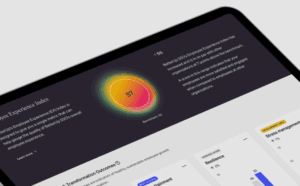Home / Blog / Google Searching Television?
Google Searching Television?
Published: November 15, 2017
Share on LinkedIn Share on Twitter Share on Facebook Click to print Click to copy url

Contents Overview

A couple of years ago, I wrote a post about how Google might track TV viewing, then use media information to personalize search results in the post Google Media Consumption History Patent Filed.
At the end of October this year, Google came out with a patent about search results that are based upon searching television results.
This patent describes how TV programming guide information and closed caption information might be used in search results by Google. I could see such a feature being really useful in a convergence of television and the Web. I’ll confess – if I peer over my computer monitor at my desk, I can see my TV screen, which is useful on a Sunday when I’m watching football, and checking Fantasy Football. It also sounds like it will be a little more informative than using the program guide from my Cable company, assuming that I would be able to access that information on my computer, which could also show me web-based results based upon related queries.
Related Content:
The patent describes such activities in detail:
Many people like to multi-task while watching television. In some cases, a person may like to surf the web or chat with friends while watching television. In some cases, a person may play a game while watching television. These activities sometimes draw viewers away from television to their personal computer, cell phone, game console, or another network-connected device.
Sometimes, computer users perform searches for content that is available on the Internet. For example, a user may browse to a web site for a search engine. At the search engine web site, the user enters a search query. The search query generally includes words, phrases, or operators that describe what the user is looking for. The search engine processes the search query and returns a set of search results to the user. The results generally include links to web pages or other content available on the Internet that match one or more terms in the search query. The user can then select a link in the search results to navigate to the corresponding web page.
The process also describes television-related search suggestions. It could return such suggestions by looking at metadata related to television programming being presented on a display device,
and extracting keywords from that metadata.
The Google patent is:
Television related searching
Inventors: Vincent Dureau, Salahuddin Choudhary, Benjamin Ling, Shalini Pai, Dennis Miloseski, Justin Koh, Rich Bragg, and Alok Chandel
Assignee: GOOGLE INC.
US Patent: 9,807,464
Granted: October 31, 2017
Filed: May 10, 2011
Abstract
The subject matter of this specification can be implemented in, among other things, a computer-implemented method that includes identifying metadata related to television programming being presented on a display device. The method further includes extracting one or more keywords from the metadata. It further includes generating multiple search suggestions based on the keywords and first search results based on one or more of the search suggestions. The method further includes presenting the search suggestions and the first search results together on the display device.
The patent talks about more than viewing television programming on one screen and the web on another. It also talks about seeing both on one screen, where additional content is shown with the programming:
The visual and audible output of the additional content can be shown superimposed on the television programming or, in the case of video, around the television programming. For example, visual output can be shown in the blank space that exists where the aspect ratio of television programming content does not match the aspect ratio of the display device presenting the television content. Alternatively, the display device can be split, for example, into two halves or four quarters, where the television programming and the additional content are presented in separate portions. In another example, the television programming can be presented in a thumbnail or a corner of the display device on top of the additional content that is presented full screen or vice versa.
The Google patent also talks about such additional content is on a separate screen. Content such as chatting with others watching the same show, visiting fan websites, or looking at targeted advertisements.
We also hear about a search device controlling the tuning of television channels or playback of another TV programming
Moving Forward Searching Television
This patent is about a convergence of television and search and the Web. It’s a hint of what we might see in our homes and offices in the future as the Web and TV are connected more closely. The patent describes connecting a television stream up directly to a search device that may be able to show information on both the internet and television channels. It’ll be interesting to see how Google might eventually turn these ideas into hardware products or online services.
It will also be interesting seeing how news on TV adopts a hybrid of the Web and television. The same with local stations. There are a lot of possibilities for what we might see when these technologies grow closer together.
About Bill Slawski
MORE TO EXPLORE
Related Insights
More advice and inspiration from our blog
Time To Answer: The Fastest Answer Wins. Optimizing for Humans and AI
Time To Answer (TTA) measures how long it takes a visitor...
Dan Hinckley| October 13, 2025
The New Rules of AI Search: How PR and GEO Shape Visibility, Revenue, and Competitive Advantage
AI search has rewritten the rules of visibility. Learn how PR...
Kimberly Anderson-Mutch| October 06, 2025
The Future of SEO: Why TikTok, Reddit, and ChatGPT Are the New Search Engines
The walls between search and social are gone. See how brands...
Ethan Kramer| October 06, 2025





